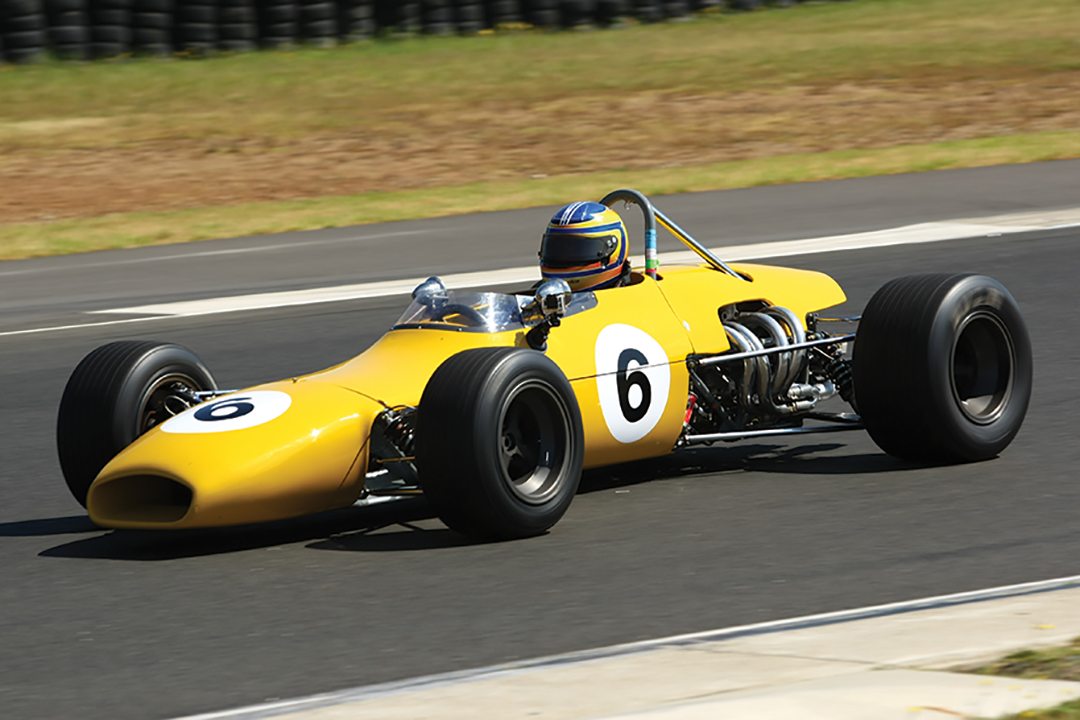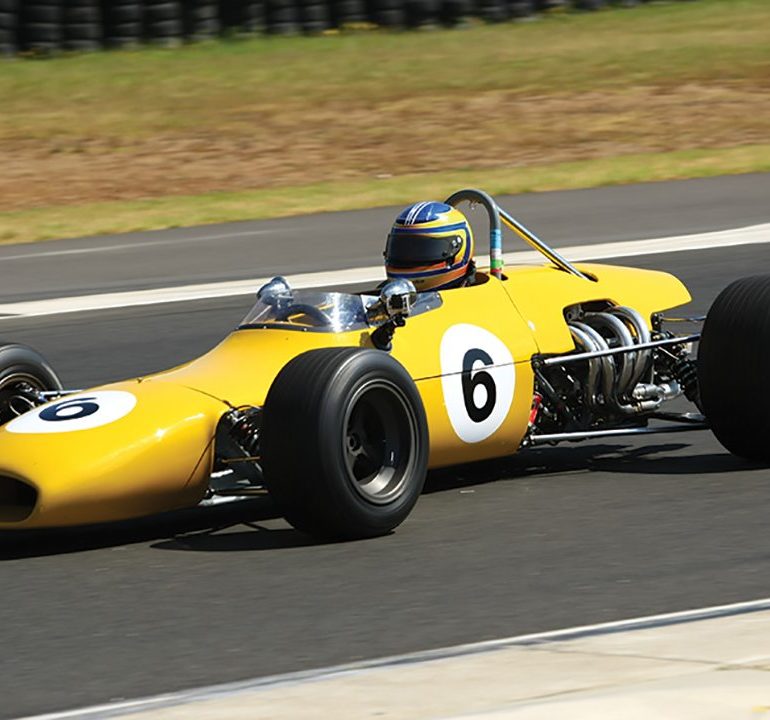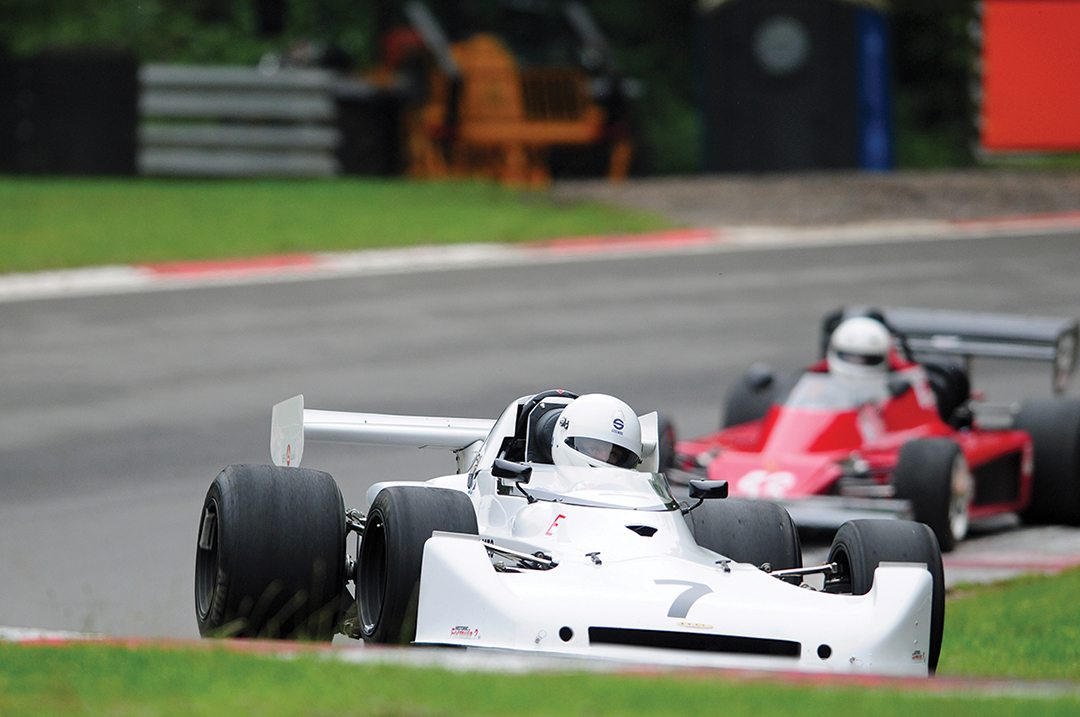From 1964 to 1978, a series of flat-bottomed formula cars were manufactured to serve as steppingstones to Formula One and the upper echelons of open-wheel racing. In the late ’50s, F2 and F3 were consolidated into Formula Junior. However, with that category’s demise at the end of 1963, F2 was reformed, utilizing highly developed 1,000-cc, fuel-injected engines until 1966. From 1967 to 1971, racecars manufactured for F2 were equipped with a more powerful gear-driven Cosworth FVA engine, while in the United States many of the same chassis were being outfitted with Lotus twin-cam engines for what was known as Formula B. By 1972, F2 graduated to two-liter displacement, with engines being manufactured by firms such as Cosworth, Hart and BMW. During this same period, Formula Atlantic replaced FB, both in the United States and overseas, with similar chassis to the F2 cars, but running the 1,600-cc Cosworth BDA or BDD engine.
Though various models were sold in both F2 and Atlantic form, the F2 cars today command a much higher value due to their more sophisticated and expensive engines. The value of these F2 variants is also bolstered by the fact that they were usually driven by some of the greatest, current or up-and-coming F1 drivers of the day, names such as Jackie Stewart, Jochen Rindt, Niki Lauda, Emerson Fittipaldi and the like.
1974 Lola T360 Formula Atlantic
Eric Broadley’s Lola cars of Huntingdon, Cambridgeshire was known for constructing top-quality single-seater and sports racing cars. By 1974, Lola had just won the Formula 5000 championship with the T332, had ventured into the 3.0-liter Manufacturers World Championship with the T280 and had won the two-liter European Sports Car Championship a few years earlier with the T212. Their design for the 1974 Formula Atlantic Championship was the T360. It was a monocoque design with outboard suspension, sleek bodywork and adjustable rear wing. It was powered by a 1.6-liter Cosworth BD engine mated to a Hewland FT 200 gearbox. Nineteen cars were built and used primarily as Formula Atlantic cars although Ted Wentz did convert one to Formula Two specification. Competition was fierce in both the Canadian, U.S. and British Formula Atlantic championships, with entries from Chevron, Martini and March. Drivers such as Jaussaud, Depailler, Villeneuve, Brack and Rahal took part. Wentz did win in the English Atlantic series at Silverstone and Bobby Rahal ran well with a T360 in the USA. The Atlantic series was always a great feeder series into Indycars or other Formula. Today, there are historic venues for Formula Atlantic cars to race, and it is a lot of race car for the money.
1969 Brabham BT29 Formula B

Jack Brabham’s company, with designer Ron Tauranac, built successful single-seaters for many categories. Brabham’s car for the U.S. SCCA Formula B category was the BT29. It was a space-frame design, with outboard suspension, powered by a 1,600-cc Lotus Twin-Cam engine and a sturdy 5-speed, Hewland FT200 gearbox. This car was an excellent handling, predictable, sturdy car, as Brabham clients had come to expect. It had enormous success in U.S. competition, winning multiple titles. The BT29 shared a similar frame design with the BT28 1000-cc Formula Three car and the BT30 1600-cc Formula Two car. To identify them, the BT29 had a chassis plate mounted on the dashboard with, for example, the number BT29-7 (chassis number 7); in the sequence of numbers, 13 was left out. The frames were built by Arch Motors, to Brabham’s specifications. They had a frame number stamped on the rear of the frame, on the gusset, adjacent to the upper damper attachment hole on the rear cross member: AM 69 21. This indicates that Arch Motors made the frame in 1969. This cannot cross-reference to the dashboard plate. These cars are very popular today in historic racing across the United States.
Criteria Used For Assessing Valuations for this Guide:
- Degree of Originality
- Overall Condition, Restoration
- Technology, Design, Coachbuilder
- Production Numbers/Rarity
- Competition History
- Ownership History, Documentation
- Modern Event Eligibility
Regional Variances
The prices stated in this guide are based on U.S. values. The values of historic racing cars can vary as much as 25%-35% in other countries, depending on local market appeal, currency rates, import duties, and VAT. Most of the time, we are able to document known sales or closed escrows, as they say in real estate. When this is not possible, a logical estimate of the car’s value is given, based on its sales history and relationship to cars of its type.
The prices stated in this guide are based on U.S. values. The values of historic racing cars can vary as much as 25%-35% in other countries, depending on local market appeal, currency rates, import duties, and VAT.
LEVEL |
VALUATION CATEGORIES |
|---|---|
I |
The best combination of all criteria. |
II |
Satisfies mid-range of criteria. |
III |
In need of restoration. Meets only a few points of criteria |





